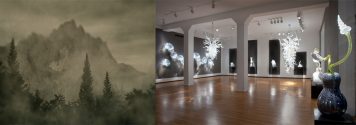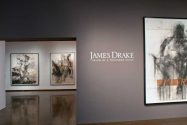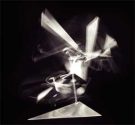“Mixed-Media Photographs and glass sculpture at Arthur Roger Gallery,” Gambit
In December, New Orleans is brimming with art events including Prospect.2, photo shows at PhotoNOLA’s array of gallery shows and the architecture expo DesCours, presented by the local chapter of the American Institute of Architects. It’s a bit much. Among the photography shows, Arthur Roger Gallery got a jump start with Ted Kincaid’s archaic looking land, sea and sky scenes resembling 19th century “wet-plate” photographs, a process prized for its poetic imperfections, but Kincaid’s work is mostly digital. Here the landscapes are dramatically otherworldly, as if some 19th century romantic artist like Alfred Bierstadt had suffered many darkroom mishaps but still got some occasionally inspired results.



